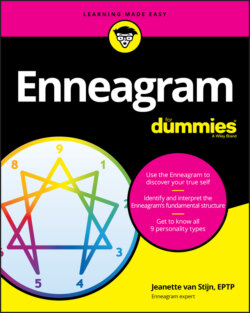Читать книгу Enneagram For Dummies - Jeanette van Stijn - Страница 84
На сайте Литреса книга снята с продажи.
Energy follows attentiveness
ОглавлениеDuring the Holiday season, the house that belongs to Tina (Type 3) is always the most beautifully decorated one on the street. She gets a lot of compliments for it each year, and it makes her feel good. They give her a good feeling, but, unfortunately, it doesn’t last long. When the praise has settled, Tina immediately gets the urge to concentrate on something else that will also be applauded — because she has discovered that applause is important to her. Now, you might say: “What is wrong with someone enjoying their efforts to decorate a house for Holiday?” Nothing, of course. I'm a fan of Holiday decorations and you might be, too. But here the question is whether it is done freely — just because it brings joy — or whether it’s based on the underlying driving force of the type mechanism. Tina realized that, for her, it’s the latter. She sometimes tells herself to maybe do a little less this year, but she has a hard time limiting herself.
This is just one small example of patterns of thinking, feeling, and acting. These three aspects inside you can’t be separated from each other. At some point, Tina (unconsciously) started to believe that accomplishments are prerequisites for being seen and loved. This is important to her because the praise makes her feel good. Because it makes her feel good, her attention and energy are unconsciously focused on receiving this applause. This is how thinking and feeling influence each other and are implemented in action — in this case, in an activity intended to attract applause.
Many people like to receive praise, but for some people, like Tina, this need plays an overpowering role in their daily lives. Her antennas for applause, so to speak, are constantly in reception mode. This driving force forms the pattern for her thinking, feeling, and acting and gives her life content. The Enneagram knows nine of these driving forces, each of which forms the foundation of a certain automatic pattern.
Here’s another example: Mary’s attention (Type 1) is unconsciously and automatically focused on whether things are correct and appropriate. This is why she immediately notices when something isn’t entirely proper or right. She has no trouble zeroing in on precisely what's the matter. As a result, she has a tendency to improve whatever seems awry. Her attention is therefore directed toward showing what is correct and what isn’t. Her energy follows that attention and corrects what isn’t appropriate. We call this automatism — her natural tendency to correct.
You can see this as Mary’s strength, but it’s also a weakness. When you ask whether Mary is freely acting this way, you come to the conclusion that she is certainly not free. The corrections are so unconscious and automatic that you could call them compulsive.
